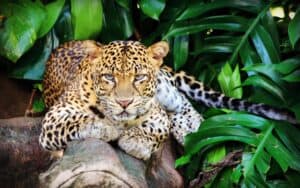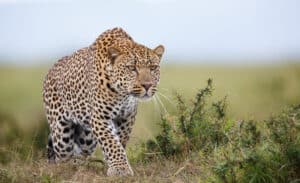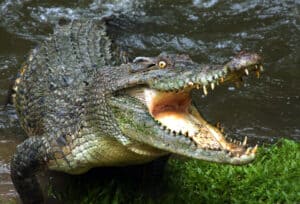Gymnast Leopard Lunges From High Tree Branches to Take Down a Gazelle!
In the incredible video at the top of the page, a cunning leopardess perfectly positions herself to ambush. As the video begins, the familiar voice of David Attenborough explains the hunting tactic on display. The female leopard seems to be deeply asleep, but in reality it’s ready to attack at the drop of a pin. Instead of spending energy tracking and ambushing prey on the ground, leopards have learned a new strategy. By climbing into tree branches and waiting for their prey to come to them, a sleeping leopard will suddenly shift into action.
We see just the same in the example in the video, as the leopardess wakes up and silently moves into position. A herd of gazelle are eating the seed pods that have fallen from the tree that the leopard is hiding in. So they’re directly below, and the leopardess can afford to get perfectly in position. However just as she leaps from the branches to pounce, the targeted antelope senses impending doom and dashes! Quickly getting away in the knick of time, the leopard makes a futile chase for a moment. But she gives up soon after, and then moves on to reset the strategy.
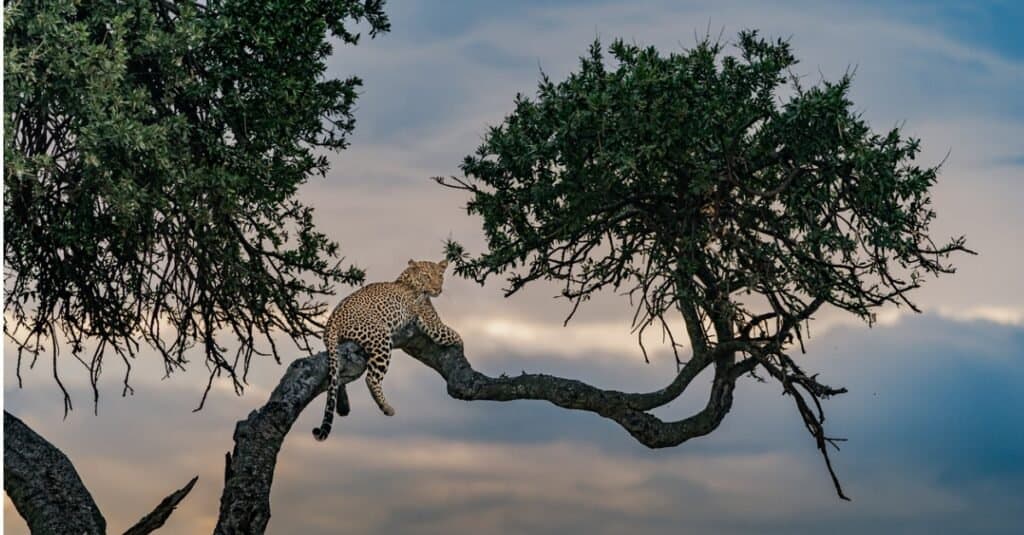
Spending much of their lives in the treetops, leopards are expert hunters and capable of jumping great distances.
©iStock.com/Hermis Haridas
The video then cuts to a new clip, where the camera follows a different leopard. This leopard is even more daring, and has climbed up to a branch 9 meters in the air! Sitting above the height of a second floor building, Attenborough remarks that leopards can die from this height! But this leopard is undeterred, and after positioning itself launches from this huge height! Dropping down from the incredible height, the leopard hits pinpoint accuracy to tackle an antelope. Flipping over and chomping the antelope’s neck in an instant, it drags its prey back up into another tree.
Why Do Leopards Use This Risky And Dangerous Strategy of Leaping From Trees?
Leopards’ unique dive bombing strategy likely came from how much of their lives is spent in trees. Over countless generations, these majestic cats have developed unparalleled agility and understanding of their treetop domain. So, the evolutionary roots of this behavior lie in the challenges present in their habitat. Leopards have long been documented to use treetops as a safe haven. By being able to stay out of reach of competing predators, leopards use treetops as their exclusive zone. Considering a leopard’s strength, the fact they need to seek refuge underscores the difficulty of life in their habitat.
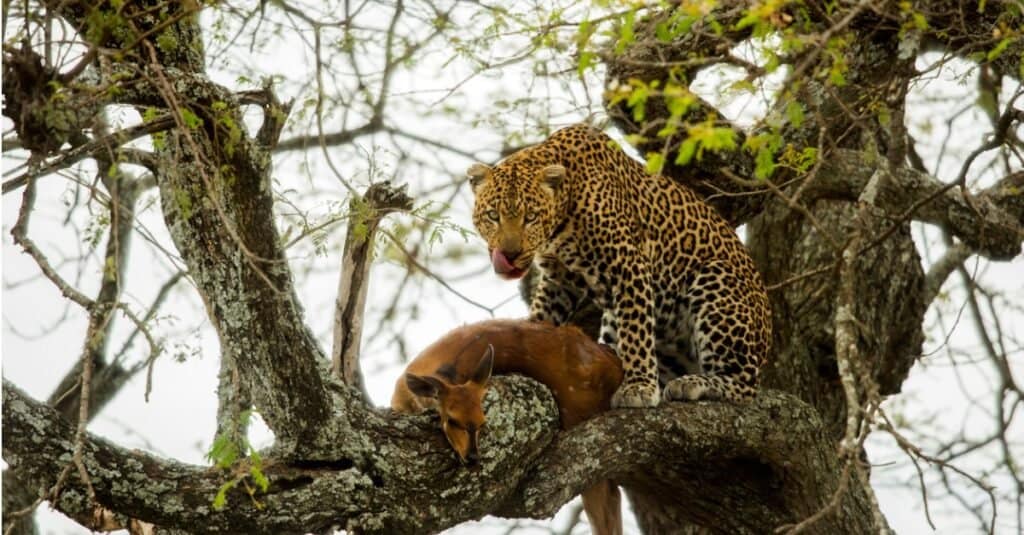
Leopards are nocturnal, solitary hunters who often save their kills for later by dragging them into trees. This keeps competing predators who lack the
climbing prowess from getting at leopards’ kills
!
©iStock.com/GlobalP
Unlike their big cat counterparts, such as lions’ coordinated pack hunting or cheetahs’ all out sprints, leopards have embraced the patient, solitary approach. This treetop lifestyle allows them to capitalize on the element of surprise, particularly when targeting smaller prey like impalas and antelope. In the highly competitive feline world, leopards still stand out, their distinct hunting style serving as a testament to their adaptability. With a special set of nuanced skills, and jaw-droppingly brave hunting tactics, the leopard is truly an amazing animal.
The photo featured at the top of this post is © Daniel_Ferryanto/Shutterstock.com
Thank you for reading! Have some feedback for us? Contact the AZ Animals editorial team.



